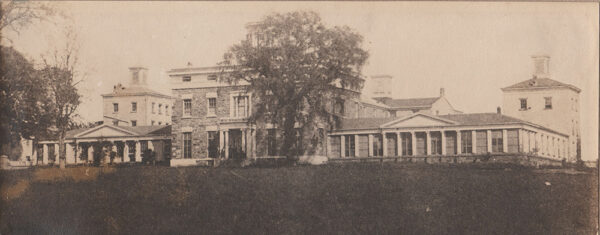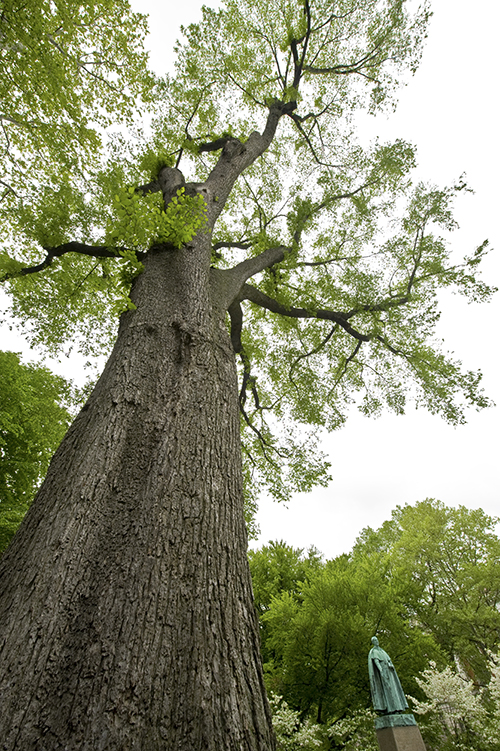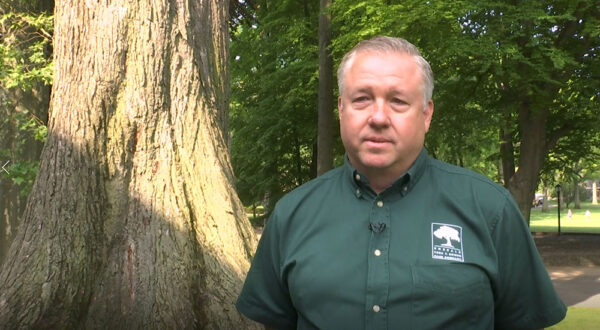
FORDHAM — In 1841, Bishop John Hughes of New York bought the 106-acre Rose Hill Manor farm in the village of Fordham on the west side of the Bronx.
Bishop Hughes originally wanted to build a Catholic seminary on the site, but instead his plans morphed into a college. Today it is Fordham University.
But before Bishop Hughes paid nearly $30,000 for the acreage, an American elm tree had already been growing there for nearly 100 years. It still stands, next to a statue of Bishop Hughes, who became archbishop of New York in 1850.
“I love this tree,” said Steve Farrelly, a certified master arborist who works to preserve the elm. “This one in particular is really special because of its size and its history.”
The tree is 140 feet tall and has a canopy spread of 120 feet. Its caretakers believe it’s one of the oldest trees on record in New York City.
Farrelly works with Fordham’s facilities team. Together they estimate the tree is about 280 years old, which would place its sprouting at about 1743.
That means it would have already been standing for a few decades in 1776 when Continental and British armies battled over what today are boroughs of New York City.
The tree is shown, fully mature, in an archival photo of Cunniffe Housel, one year before the end of the American Civil War in 1865.
Ralph Rivera, Fordham’s director of facilities, noted this tree has seen every student come and go.
Likewise, it has sheltered wildlife. According to the university, workers recently captured a family of raccoons and humanely relocated them.
“It’s a center point if you think about the history of Fordham when this was all farmlands,” Rivera said. “How symbolic for the university. We’re still here, (and the tree) is very deep-rooted within Fordham.”
The tree has endured a lot in its three centuries — including an outbreak of Dutch elm disease in the 1940s that killed more than 40 million others across the country. In recent years, it sustained damage from Hurricanes Sandy and Irene.
Now, every other year, Farrelly treats it with a fungicide. Regular pruning of upper limbs during winter eases weight pressing down on lower limbs, the university said.

According to Fordham, its Rose Hill campus contains more than 500 trees, including about 100 American elms. Many of these trees are also historic, some more than 150 years old.
Since 2011, the university has grown its own American elms, red maples, northern red oaks, and Japanese maples at its Calder Biological Field Station.
Farrelly said all these tree-care practices align with Fordham’s Jesuit mission.
“We stand for sustainability and integrity and Fordham does the same thing,” he said.
This article includes reporting from Jessica Easthope, Currents News.

